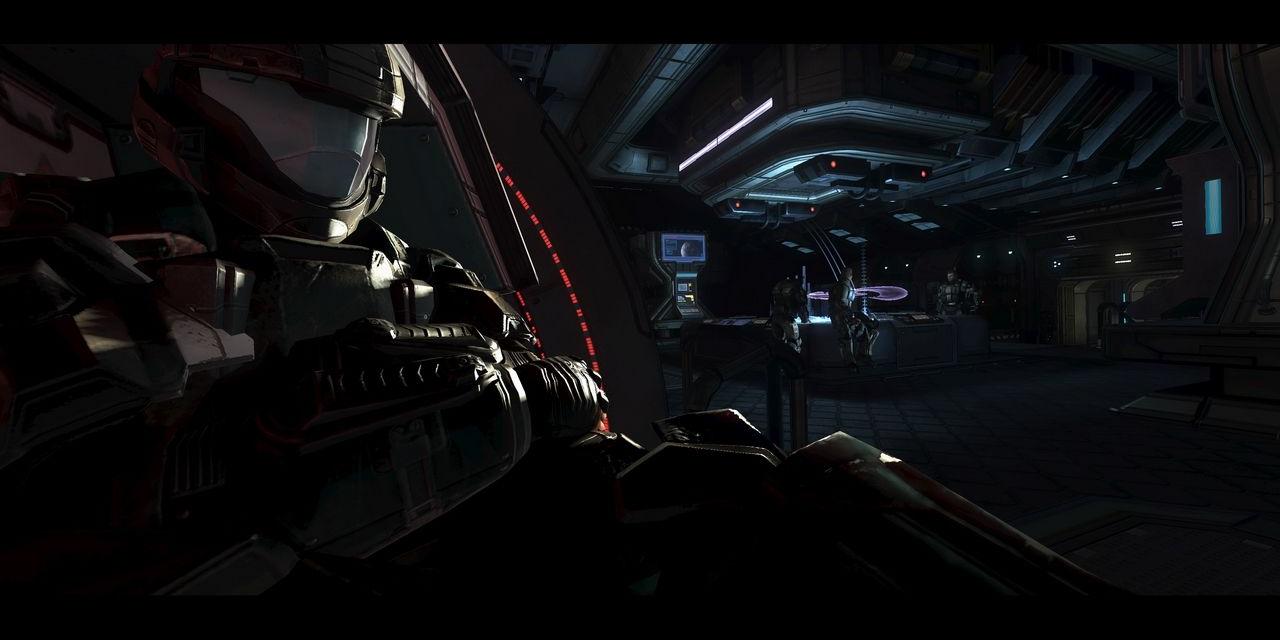
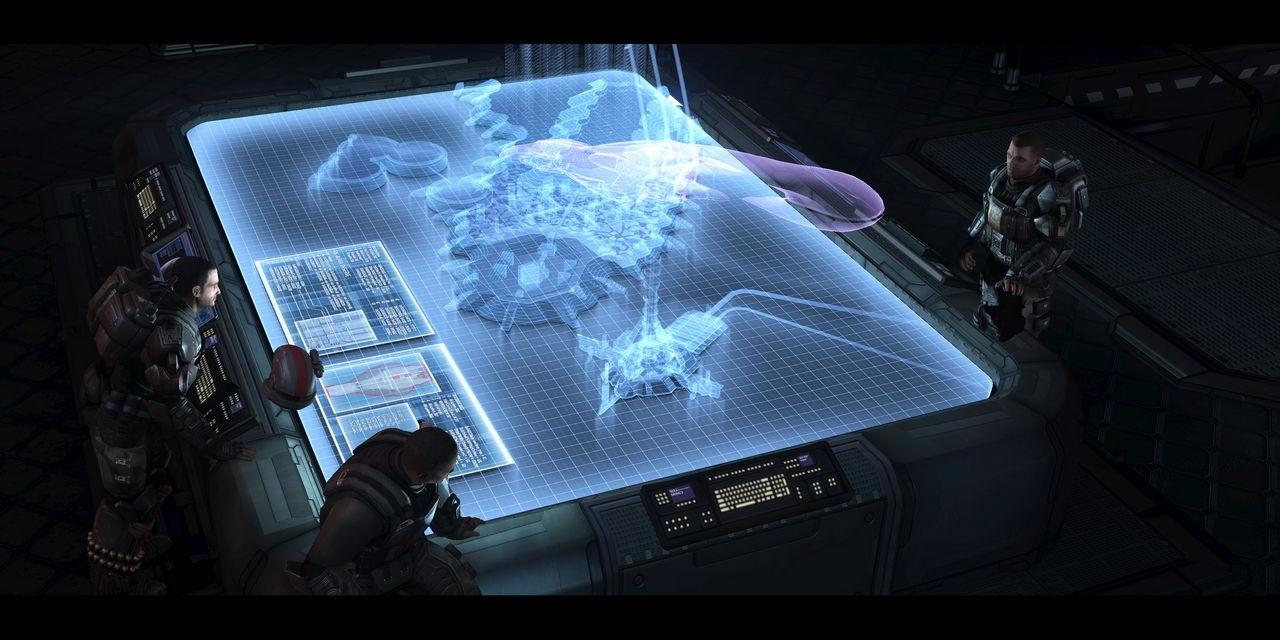
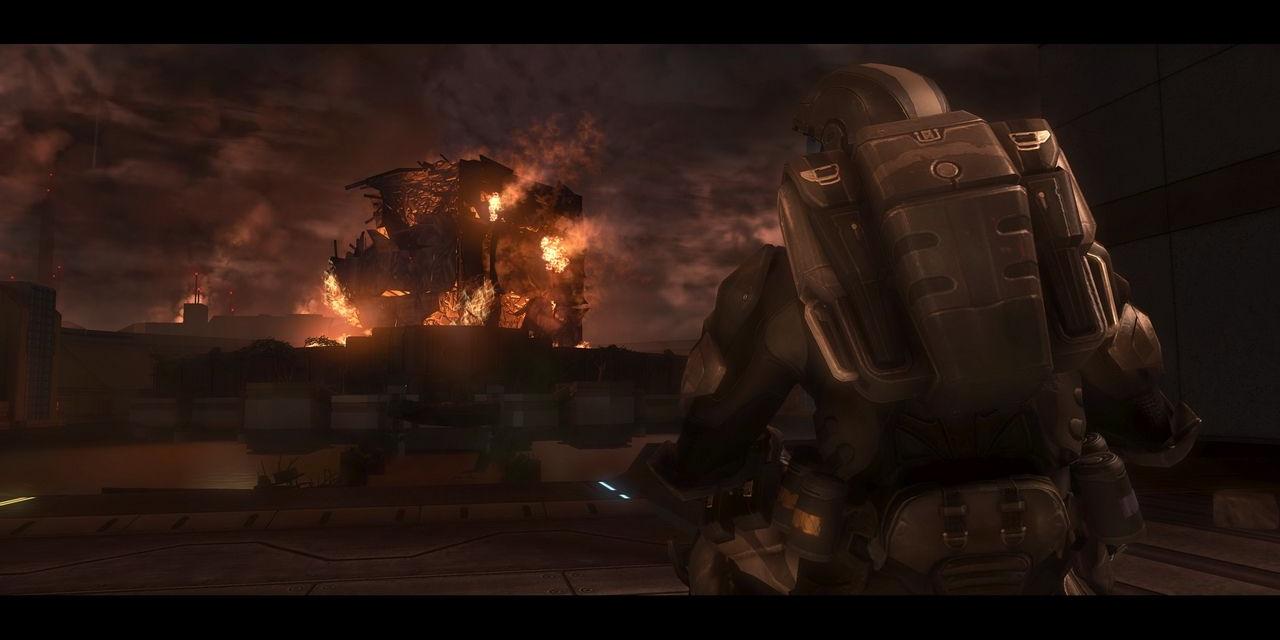
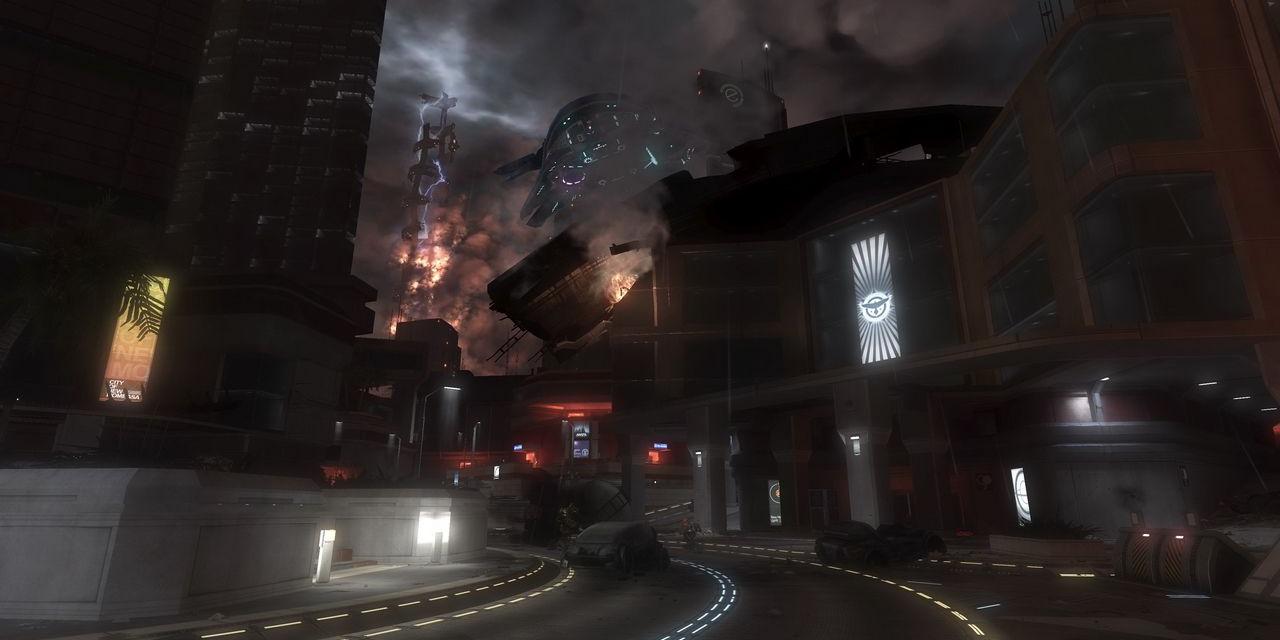
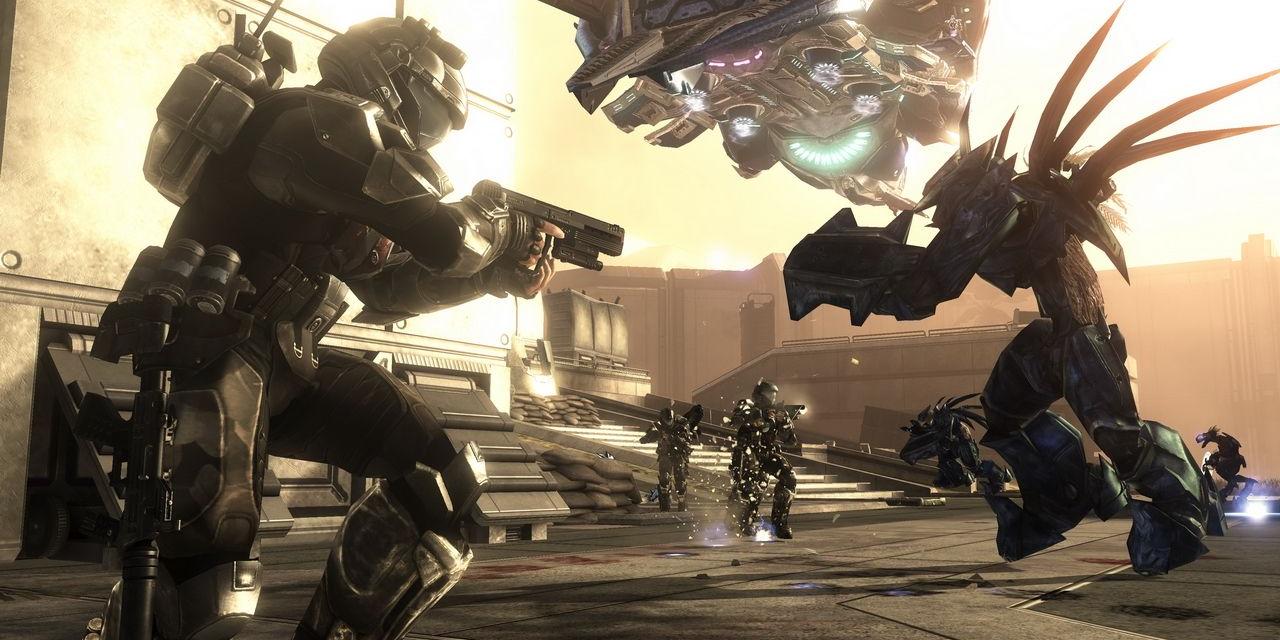
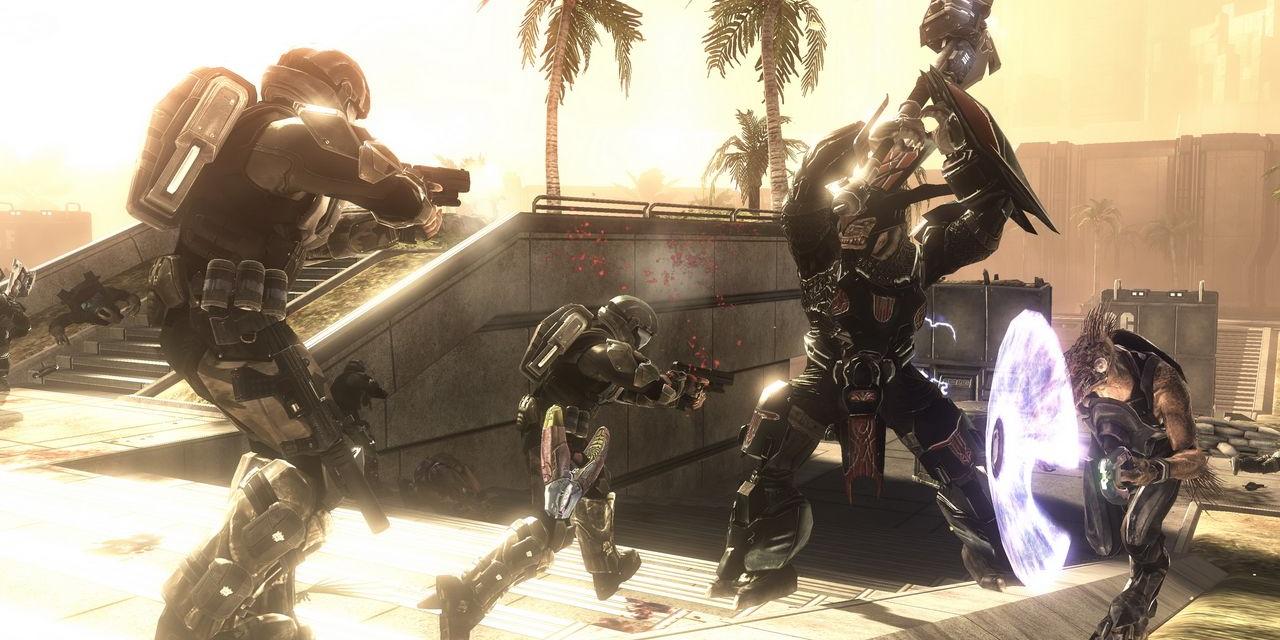
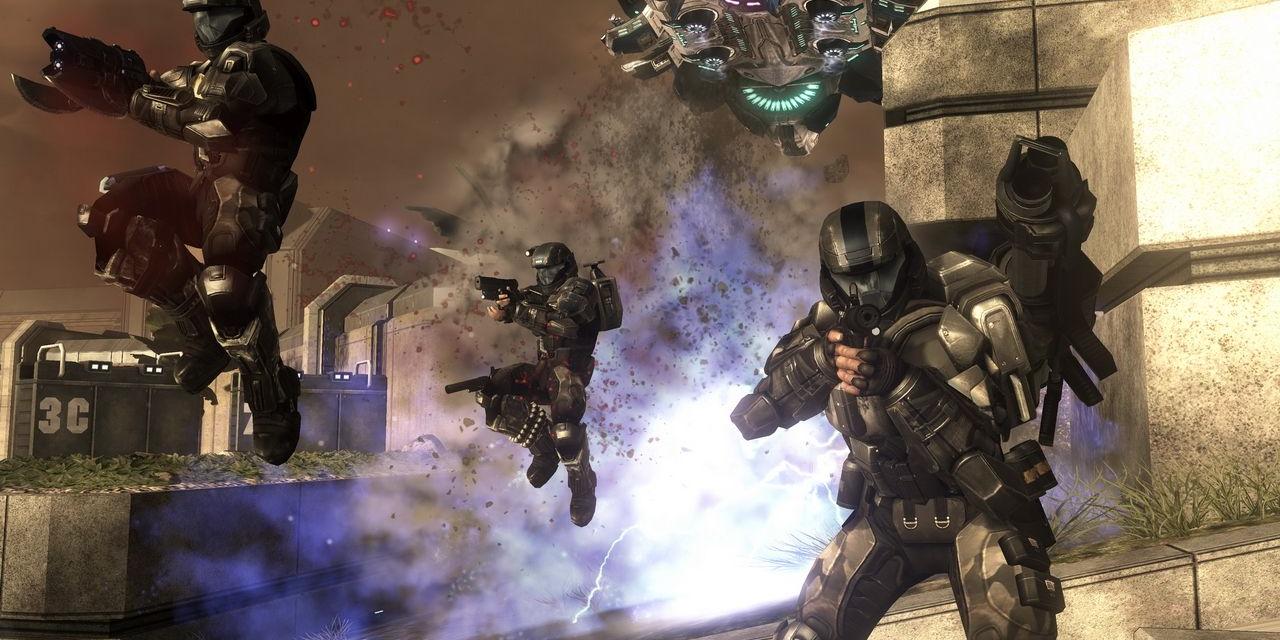
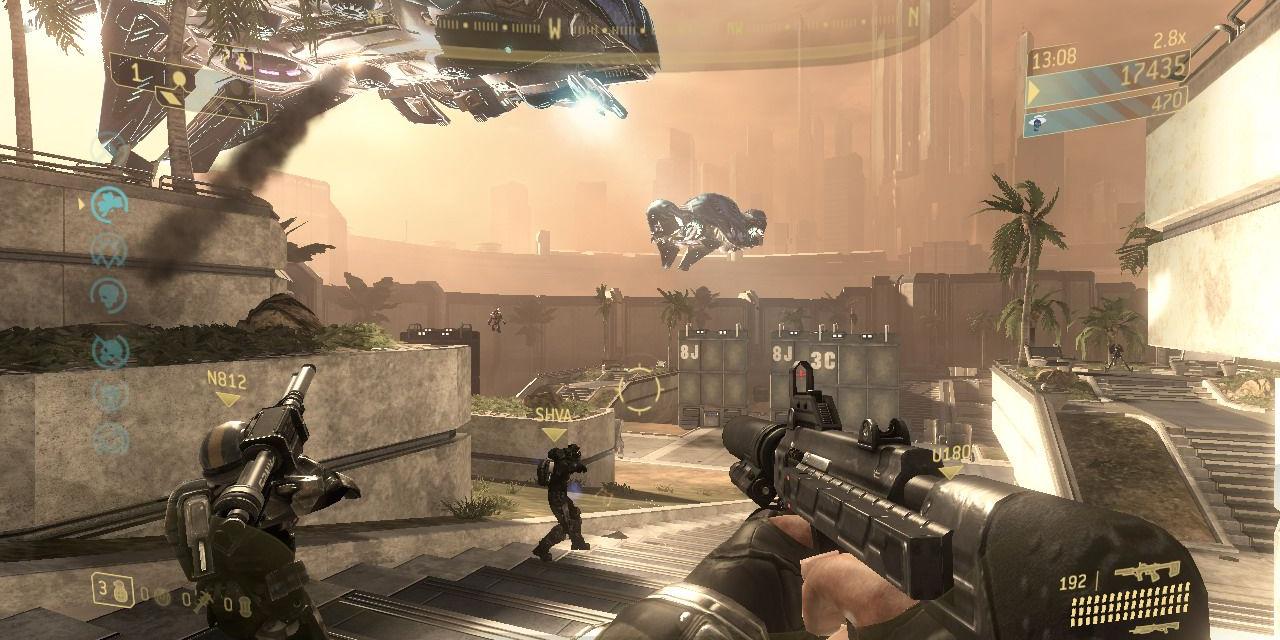
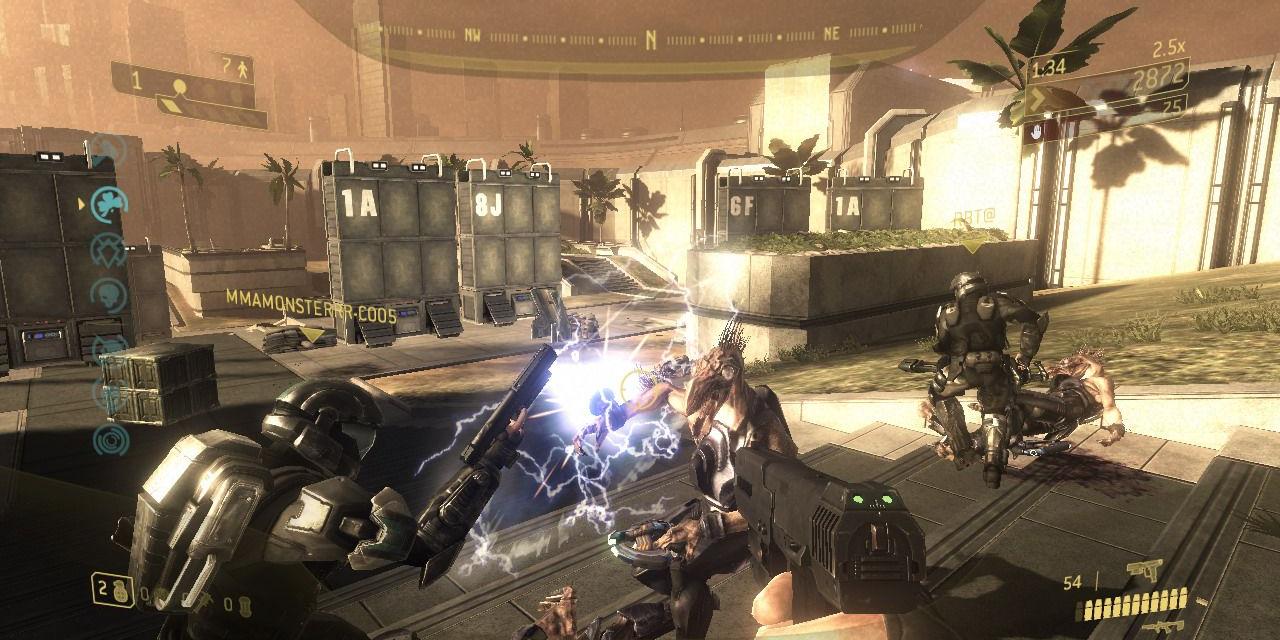
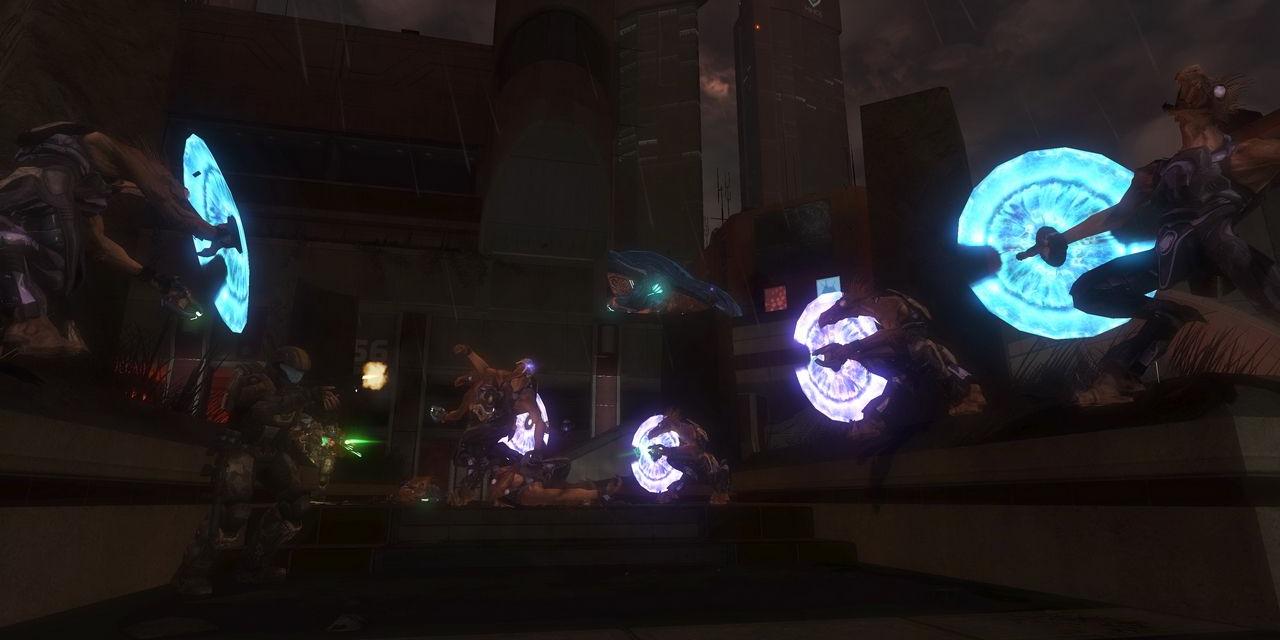

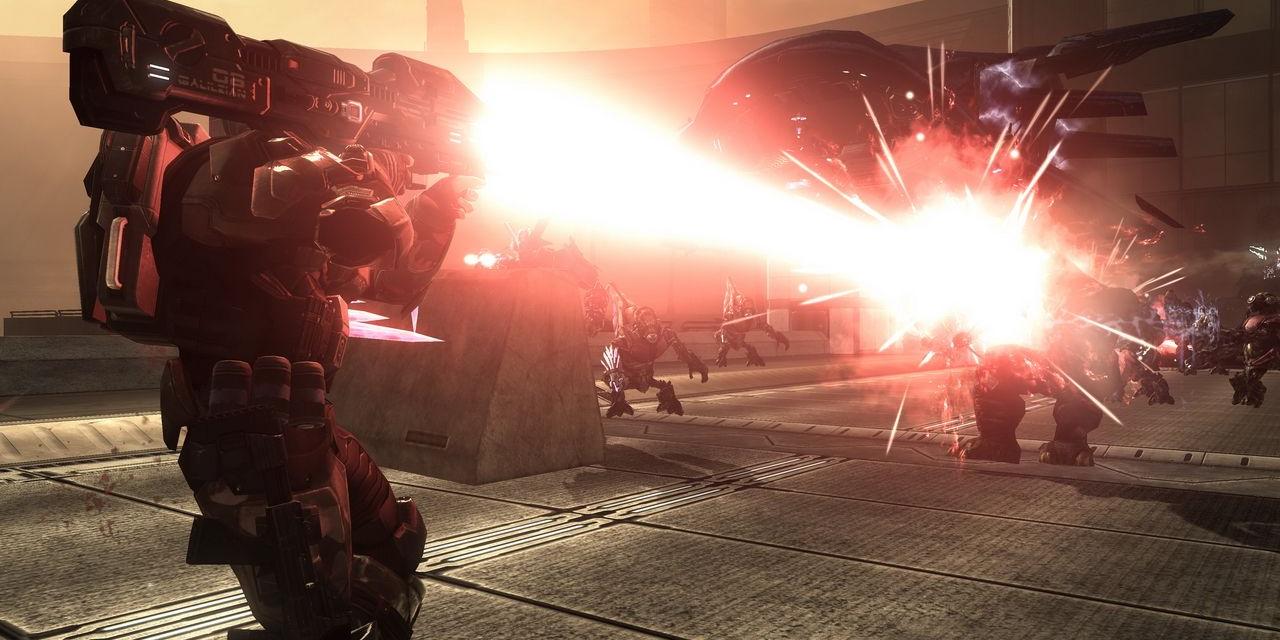
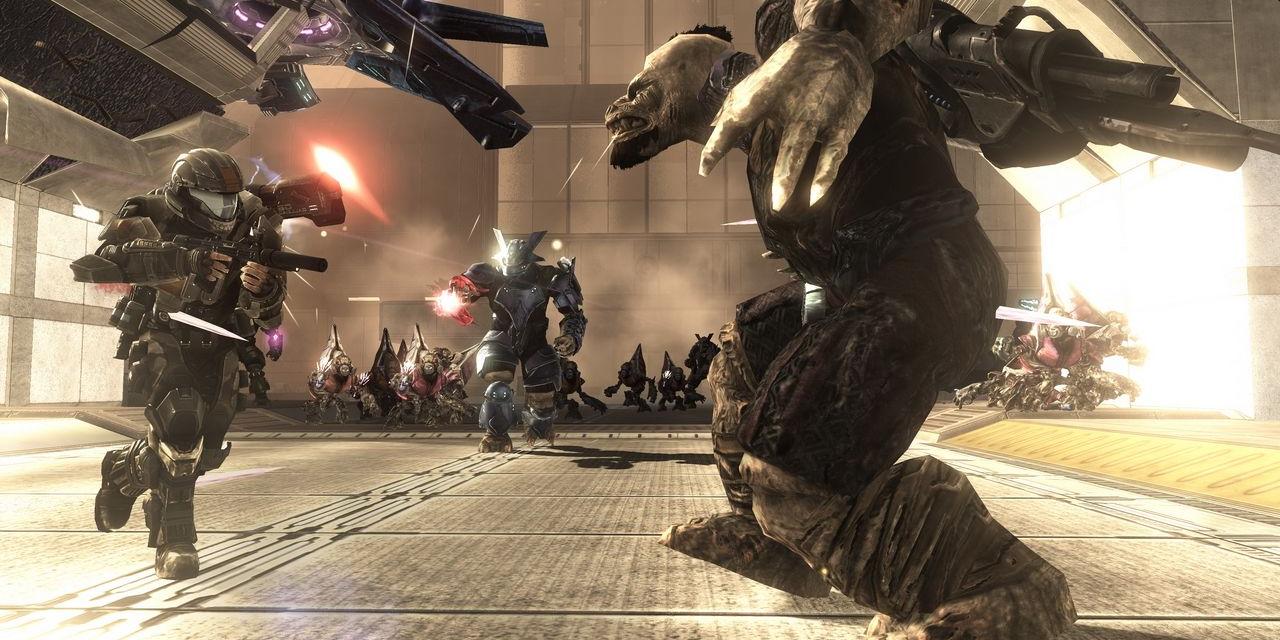
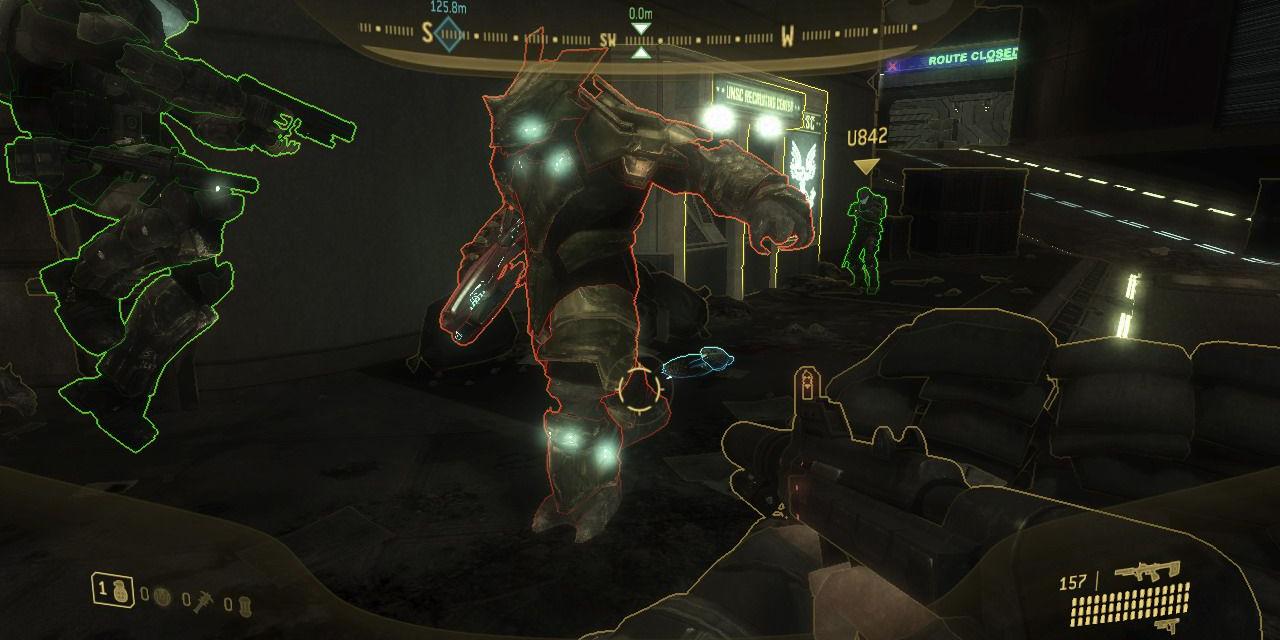

Rather than bring Halo 4 to life, Bungie announced last year that it would be serving fans a Halo 3 single-player expansion pack rather than a true sequel. Over time, Halo 3: ODST has evolved into a full-fledged, full-priced title that demands to be played on its own merits. Halo players might notice a little something missing, however: there's no Master Chief in this one, folks.
Instead of donning the hallowed helmet of everyone's favorite space marine, you'll be playing as an Orbital Drop Shock Trooper (yes, that is where the ODST comes from) known as "the Rookie." The Rookie is a lone UNSC soldier protecting New Mombasa in the East African Protectorate (what was formerly Kenya). He's weaker, slower, and more vulnerable than MC, so expect to spend a significant amount of time in cover, strategizing, rather than running in guns blazing and straight up kicking a Jackal in the face.
The game boasts a nerd's delight of a voice cast, the likes of which we haven't seen since C&C3. Three of your space marine teammates will be voiced by Firefly/Serenity alums, including Nathan Fillon (Buck), Adam Baldwin (Dutch) and Alan Tudyk (Mickey). Not to be outdone by the men, Battlestar Galactica is well-represented by Tricia Helfer, who plays Dare, an ONI agent in charge of the squad. Something tells us Cortana won't hold a candle to her. And that something is hotness. Brace yourself for this trivia fact: in a rare move for this industry, Nathan Fillon and Tricia Helfer were actually in the same room, doing their voice acting at the same time. It is unknown what kind of force field Bungie constructed around their studios to prevent the world from exploding upon this awesome meeting.
ODST takes place before the events of Halo 3, at about the same time as the end of Halo 2. Players finishing Halo 2's campaign were left with images of Earth under attack, and ODST tells the story of how humanity defended it. The game features weapons, vehicles, etc. from Halo 3, an anachronistic move (to fit in with the time table it should feature assets from Halo 2) that has some die-hard fans upset. We have a feeling that once they get into this game, they'll be having too much fun to care about continuity.
Since you lack the MJOLNIR armor of Master Chief, you'll be missing some of his talents and equipment as well. As mentioned before, you won't have the tough shields you're used to. You also won't have the motion tracker. Gone is the ability to dual-wield weapons, too (perhaps they are simply too heavy for your insufficiently-armored body to hold?). There are some new goodies in store, though, that should make up for it.
You won't be seeing the same HUD in ODST as you're used to. Instead, your helmet will display VISR (Visual Intelligence System, Reconnaissance), which outlines enemies in red for your convenience. Other items of importance will be outlined in yellow, and teammates will be outlined in green. If you're looking for a map, you're out of luck, because all you're getting is a compass. Graciously, VISR marks objectives on the compass (a la Call of Duty) rather than forcing us to rely on our senses of direction in the open-world environment. You'll still have an aiming reticule like in the earlier installments of the Halo series.
You'll also class it up a bit with a PDA (that's Personal Digital Assistant, but hopefully that didn't really need to be explained to you) that'll give you information helpful in reaching your objectives and completing your missions. ODSTs have access to two new weapons they often start missions with: the M7S Machine Gun and the M6C/SOCOM. The M7S Machine Gun is a variant of the M7 Caseless Submachine Gun. It separates itself by offering an external flash and sound suppressor (essential for the stealthier-not stealthy, but stealthier-gameplay of ODST) and a laser sight. The M6C/SOCOM is a semi-automatic pistol, and a variant of the M6C Magnum Sidearm. It'll shoot a lot like the powerful scoped M6D pistol fans loved in Halo: Combat Evolved.
As the Rookie, you'll be looking for beacons around the open-world map that will provide clues to what happened to your five squadmates, the four mentioned before and Romeo, a soldier of what appears to be East African descent. Once you find these beacons (presumably homing devices attached to drop pods, one-person craft that lower ODSTs into battle), you'll experience flashbacks that last about 30 minutes and put you in the role of that character, experiencing the events that they experienced. Unlike the rest of the game, these flashbacks will be linear experiences.
Lest you balk at the idea of paying full price for what was formerly deemed an expansion pack, the game's lead producer has stated that ODST's campaign will be similar in length to that of Halo 3.
Bungie audio lead and original Halo trilogy composer Martin McDonnell will also be doing ODST's music. Instead of the droning, operatic druid chants you're used to, expect a brand-new musical style to fit in with this brand-new way of playing Halo. He put it charmingly to Music 4 Games this way: "Overall I think this score is a bit more intimate and personal. We're telling a human story, not a cyborg story. This isn't a space opera but a story that takes place on Earth in one city. Although the player gets to inhabit the shoes of several characters, they still primarily should feel like one person discovering the mystery that lies behind the ruins of New Mombasa."
If you're looking for a brand-new multiplayer experience, tough taters. Halo 3 ODST will offer almost identical multiplayer to Halo 3, and will ship with a total of 24 maps, only 3 of them new. The maps consist of the original 11 Halo 3 maps (Construct, Epitaph, Guardian, High Ground, Isolation, Last Resort, Narrows, Sandtrap, Snowbound, The Pit, and Valhalla), the Heroic map pack (Foundry, Rat's Nest, and Standoff), the Legendary map pack (Avalanche, Blackout, and Ghost Town), the Cold Storage map, and the Mythic map pack (Assembly, Orbital, and Sandbox). Three new maps are included, called Citadel, Heretic, and Longshore. Citadel is a smaller map (meant for 2-6 players) that takes part in the Forerunner cathedral that overshadows the Ark. Epitaph (an original Halo 3 map) features another section of this cathedral. Heretic is a remake (the fifth multiplayer map remake in Halo 3) of Midship, the Halo 2 multiplayer map. Like Midship, Heretic takes place inside the Pious Inquisitor, part of the Prophet of Regret's personal fleet of ships. It's designed for 2-8 players. Longshore is a large map in Old Mombasa that pits 6-16 combatants against each other. Longshore was originally planned to be released with the Halo 3 retail disc, but the map took too long to make. Bungie has stated that Longshore bears similarities to the original Halo: Combat Evolved map Hang 'Em High.
There will, however, be a new multiplayer mode. Deemed "Firefight," this new way to play pits up to 4 co-op buddies over Live (or system link) against increasingly difficult waves of enemies (similar to Gears of War 2's Horde Mode). Randomly generated skulls will lead to gameplay modifications that always keep the experience fresh. Firefight will have its own new medals and achievements to earn. Maps for this mode will unlock as the player progresses through the campaign, so expect to put some time into the story mode if you want the full experience. For the truly full experience, though, get your pre-orders in to unlock a playable, cigar-chomping Sergeant Major Avery Johnson. Unlike multiplayer, you won't be able to use matchmaking in the Firefight mode. Instead, your co-op experiences will be invite-only. Bungie has stated that to add in matchmaking would have taken an additional six months.
If you want to get your hands on the Recon Armor, the multiplayer armor so popular and rare that possessors are frequently met with Live account hacks, now's your chance to get it without being a personal friend of Bill and Melinda. All you have to do is complete the "Road to Recon" challenge, a series of seven Vidmaster challenges that span both Halo 3 and Halo 3: ODST. If you have Halo 3, you can get a jump on the challenge by unlocking some of the Vidmaster challenges already. Once you've completed all seven, log on to Bungie.net, link your gamertag, and get ready to frighten and intimidate your opponents into fashion-based submission.
You might end up buying Halo 3: ODST just for the Halo: Reach beta invite (hey, it worked with Crackdown and the Halo 3 beta). Once you have ODST, hold on to your registration info, because you'll be able to join the Halo: Reach multiplayer Live beta when the time comes (the game is set for a Fall 2010 release; no word on beta date). Not much of anything is known about Halo: Reach, but Bungie President Joe Staten alluded to the fact that the game will take advantage of the new Project Natal technology and the opportunity for a delightful pun (Reach as in the Halo planet; reach as in the physical action you'll need to do when using Project Natal). Personally, we're holding out for an exercise game featuring Daisy Fuentes, despite the fact that the game has already been announced as a FPS (hey, it wouldn't be the first red herring in gaming PR).
Unlike Halo 3, which took several years to make, Halo 3: ODST was completed in little over one year. With this time frame in mind, there haven't been many very extreme changes in technology from Halo 3. Instead of completely redesigning enemy behavior, only a few new AI behaviors (necessary because of the new open-world environment) were added on top of what was already done in Halo 3. Creative director Joseph Staten spoke to Ars Technica on the subject: "We knew it was going to be a modified version of the Halo 3 engine. We knew we had a smaller team, and we knew we had a year. From there we began to make plans," Staten said. "Except now the team was working with an engine they knew well, and had mature development tools. With a totally stable engine, in the first three or four months, we realized we're moving a lot faster than we thought we would." Since ODST is running on the Halo 3 engine, it means it won't be running in 720p. In this age where practically every serious gamer has taken the plunge into HD, it's very uncommon to see a title like this released at a sub-HD level (in this case, 1152x640). There has been some controversy among fans because of this, but Bungie assures the public that artists have made the game look great. Senior game designer Lars Bakken puts it this way: "Everything that existed in Halo 3's engine was there from the beginning. So the graphical differences that you're seeing in ODST is really testament to the artists, because they were able to just take the tools that we had from the beginning, and just make awesome looking stuff." The Halo 3 engine can't run in native HD because it uses two framebuffers instead of the typical one. The lower resolution allows for dynamic range preservation in lighting without slowing the frame rate to painful levels. High dynamic range rendering allows visibility in very light and very dark scenarios, with details appearing clearly across the lighting spectrum.
If you're a hardcore Halo multiplayer fan, you've already seen most of this before. Everything about multiplayer (including the vast majority of the maps) is the same as in Halo 3. However, these 3 maps (along with new achievements and the possibility of obtaining the precious Recon armor) might be enough to warrant a purchase based on multiplayer. With the new Firefight mode thrown in, this may be enough to send even fair-weather Halo fans into must-buy mode.
Campaign devotees should be happy, too, as long as they're willing to welcome the new play style. With Bungie's track record, we aren't expecting them to disappoint. And if you don't like it, you've got the Halo: Reach beta code to cheer yourself up with.
Pick up Halo 3:ODST when it hits stores September 22, 2009.
